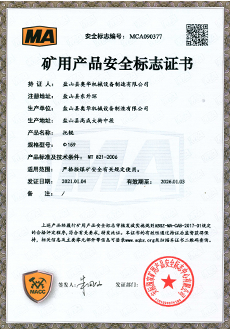 Afrikaans
Afrikaans  Albanian
Albanian  Amharic
Amharic  Arabic
Arabic  Armenian
Armenian  Azerbaijani
Azerbaijani  Basque
Basque  Belarusian
Belarusian  Bengali
Bengali  Bosnian
Bosnian  Bulgarian
Bulgarian  Catalan
Catalan  Cebuano
Cebuano  Corsican
Corsican  Croatian
Croatian  Czech
Czech  Danish
Danish  Dutch
Dutch  English
English  Esperanto
Esperanto  Estonian
Estonian  Finnish
Finnish  French
French  Frisian
Frisian  Galician
Galician  Georgian
Georgian  German
German  Greek
Greek  Gujarati
Gujarati  Haitian Creole
Haitian Creole  hausa
hausa  hawaiian
hawaiian  Hebrew
Hebrew  Hindi
Hindi  Miao
Miao  Hungarian
Hungarian  Icelandic
Icelandic  igbo
igbo  Indonesian
Indonesian  irish
irish  Italian
Italian  Japanese
Japanese  Javanese
Javanese  Kannada
Kannada  kazakh
kazakh  Khmer
Khmer  Rwandese
Rwandese  Korean
Korean  Kurdish
Kurdish  Kyrgyz
Kyrgyz  Lao
Lao  Latin
Latin  Latvian
Latvian  Lithuanian
Lithuanian  Luxembourgish
Luxembourgish  Macedonian
Macedonian  Malgashi
Malgashi  Malay
Malay  Malayalam
Malayalam  Maltese
Maltese  Maori
Maori  Marathi
Marathi  Mongolian
Mongolian  Myanmar
Myanmar  Nepali
Nepali  Norwegian
Norwegian  Norwegian
Norwegian  Occitan
Occitan  Pashto
Pashto  Persian
Persian  Polish
Polish  Portuguese
Portuguese  Punjabi
Punjabi  Romanian
Romanian  Russian
Russian  Samoan
Samoan  Scottish Gaelic
Scottish Gaelic  Serbian
Serbian  Sesotho
Sesotho  Shona
Shona  Sindhi
Sindhi  Sinhala
Sinhala  Slovak
Slovak  Slovenian
Slovenian  Somali
Somali  Spanish
Spanish  Sundanese
Sundanese  Swahili
Swahili  Swedish
Swedish  Tagalog
Tagalog  Tajik
Tajik  Tamil
Tamil  Tatar
Tatar  Telugu
Telugu  Thai
Thai  Turkish
Turkish  Turkmen
Turkmen  Ukrainian
Ukrainian  Urdu
Urdu  Uighur
Uighur  Uzbek
Uzbek  Vietnamese
Vietnamese  Welsh
Welsh  Bantu
Bantu  Yiddish
Yiddish  Yoruba
Yoruba  Zulu
Zulu troughing roller
The Importance of Troughing Rollers in Conveyor Systems
In the realm of material handling and transportation, conveyor systems play a crucial role in various industries, including mining, agriculture, and manufacturing. One of the essential components of these systems is the troughing roller. This simple yet effective design is engineered to enhance the efficiency and reliability of conveyor operations. Understanding the significance of troughing rollers can illuminate their impact on the overall performance of conveyor systems.
What are Troughing Rollers?
Troughing rollers are specialized rollers used in conveyor systems to support the conveyor belt and its load. Unlike flat rollers, troughing rollers are designed with a slight incline, allowing them to cradle the belt in a trough-like shape. This configuration enables better containment of materials and increases stability during operation. Typically, a set of troughing rollers consists of three rollers arranged in a triangular formation, which effectively helps in shaping the belt.
Advantages of Troughing Rollers
1. Enhanced Load Stability One of the primary benefits of troughing rollers is their ability to stabilize the load being transported. The trough design minimizes spillage, ensuring that materials stay on the conveyor system throughout the transport process. This is particularly important in industries that handle granular or loose materials, such as coal, grains, and minerals.
2. Improved Belt Alignment Troughing rollers assist in maintaining proper belt alignment, which is critical for the efficient operation of conveyor systems. By keeping the belt centered, these rollers help reduce wear and tear, extending the lifespan of both the belt and the rollers.
troughing roller

3. Reduced Slippage and Wear The shape of troughing rollers contributes to a more effective grip on the conveyor belt, minimizing slippage during operation. This reduction in slippage translates to decreased wear on the belt itself, which can lead to significant cost savings in maintenance and replacement.
4. Versatility in Application Troughing rollers are versatile and can be utilized in various applications. They can be found in different types of conveyor systems, including fixed, mobile, and bespoke designs, making them suitable for industries ranging from logistics and package handling to heavy-duty mining operations.
Considerations for Installation and Maintenance
While troughing rollers offer numerous advantages, their effectiveness largely depends on proper installation and maintenance. It is essential to ensure that the rollers are aligned correctly and spaced adequately to support the weight of the transported materials. Regular inspection and maintenance are crucial to prevent issues such as misalignment, wear, or damage to the rollers, which can lead to operational inefficiencies.
Additionally, incorporating high-quality materials and designs into the construction of troughing rollers can further enhance their durability and performance. Industries should evaluate their specific needs and consider factors such as load capacity, environmental conditions, and material type when selecting troughing rollers.
Conclusion
In conclusion, troughing rollers are integral components of conveyor systems that significantly contribute to their efficiency and reliability. Their unique design allows for enhanced load stability, improved belt alignment, and reduced wear, making them an essential choice for various industries. Understanding their importance can help businesses optimize their material handling processes, reduce operational costs, and ultimately improve productivity. As industries continue to evolve and demands increase, the role of troughing rollers will remain vital in facilitating the smooth and efficient transport of materials.
-
Revolutionizing Conveyor Reliability with Advanced Rubber Lagging PulleysNewsJul.22,2025
-
Powering Precision and Durability with Expert Manufacturers of Conveyor ComponentsNewsJul.22,2025
-
Optimizing Conveyor Systems with Advanced Conveyor AccessoriesNewsJul.22,2025
-
Maximize Conveyor Efficiency with Quality Conveyor Idler PulleysNewsJul.22,2025
-
Future-Proof Your Conveyor System with High-Performance Polyurethane RollerNewsJul.22,2025
-
Driving Efficiency Forward with Quality Idlers and RollersNewsJul.22,2025





























